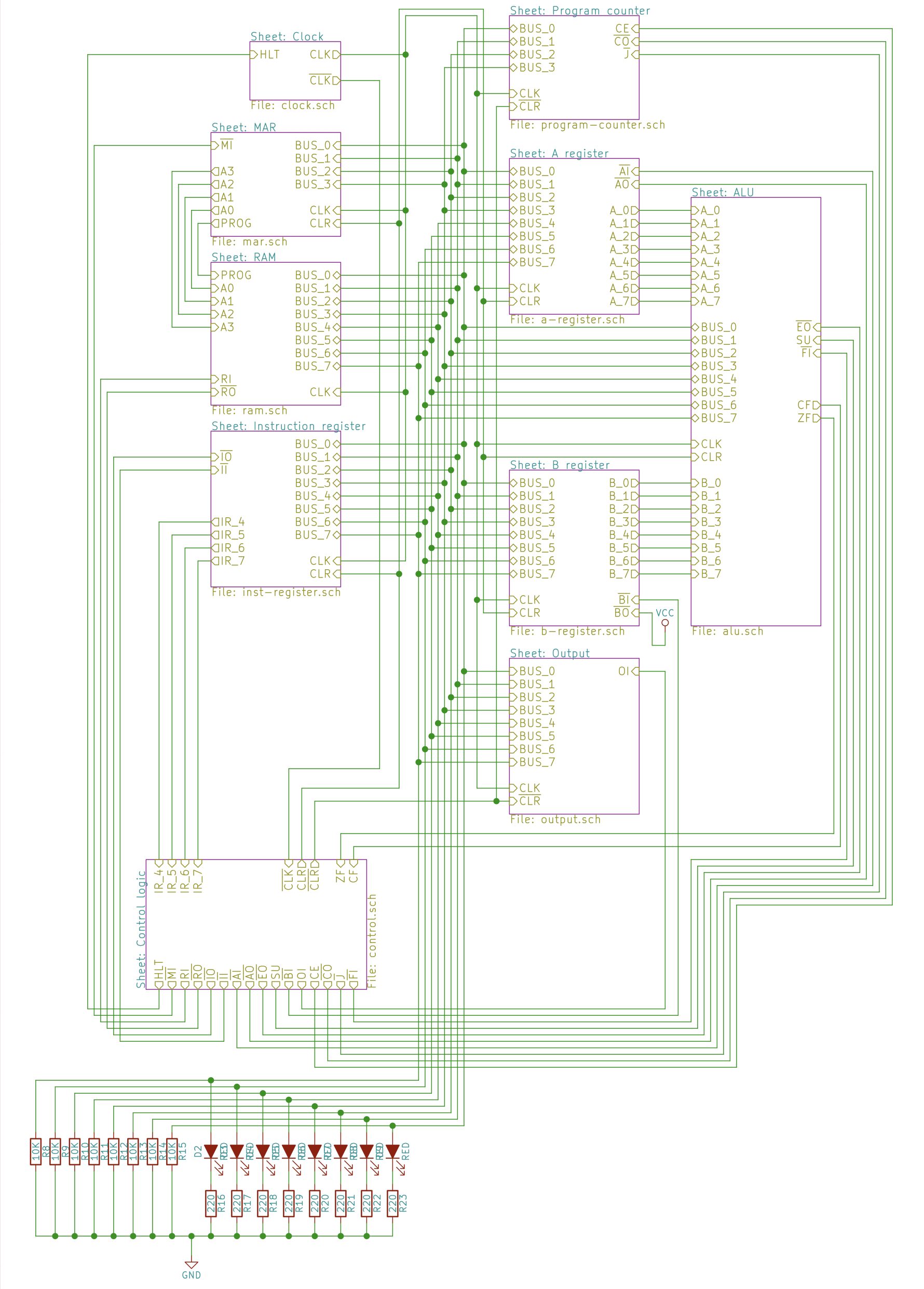Navigating the World of 8-Bit TTL: From Concept to Schematic
 Utkarsh Maurya
Utkarsh Maurya
Introduction
Greetings, fellow tech enthusiasts and future engineers! I'm a sophomore student in Electronics and Communication Engineering, and today, I want to take you on a journey through the fascinating realm of 8-bit Transistor-Transistor Logic (TTL) design. As an aspiring Kernel developer with a passion for embedded systems, I've found myself deeply captivated by the idea of creating an 8-bit TTL system. In this blog post, I'll share my insights and experiences as I delve into the intricacies of designing the schematics for this remarkable piece of hardware.
Understanding 8-Bit TTL Logic
Before diving into the schematic design, let's take a moment to understand what 8-bit TTL is all about. TTL is a digital logic family characterized by high-speed switching and compatibility with various logic gates. In an 8-bit TTL system, we have eight data lines that can each carry a binary value (0 or 1). This architecture is commonly used in microprocessors, memory units, and other embedded systems where data needs to be processed in 8-bit chunks.
Why 8-bit TTL?
You might be wondering why I'm so enthusiastic about 8-bit TTL in this day and age of powerful microcontrollers and processors. Well, there's a certain charm and educational value in working with older technologies and understanding how they laid the foundation for today's computing systems.
Creating an 8-bit TTL system from scratch allows us to:
Learn Fundamentals: It helps us grasp the fundamental concepts of digital electronics and logic design.
Hands-on Experience: Building hardware from the ground up provides invaluable hands-on experience.
Customization: We can tailor the system to our specific needs and experiment with different configurations.
Retro Computing: It's a tribute to the roots of computing technology and retro computing enthusiasts often appreciate such projects.
Designing the Schematics
Now, let's get to the exciting part - designing the schematics for our 8-bit TTL system. Here's a simplified overview of the key components and steps involved:
Logic Gates: We begin by selecting the TTL logic gates (AND, OR, NOT, etc.) needed to build our 8-bit system. Each gate has its unique function and is crucial for data manipulation.
Flip-flops: Flip-flops are essential for storing and synchronizing data within the system. We need eight of them to handle 8-bit data.
Clock Generation: To ensure synchronous operation, we generate a clock signal using a crystal oscillator or other suitable components.
Bus Lines: We establish 8-bit data bus lines to carry our binary data.
Control Logic: Control logic is required to manage the flow of data and control the overall operation of the system.
Input/Output Interfaces: For interacting with the system, we design input and output interfaces, which can include LEDs, switches, and connectors.
Power Supply: We provide a stable power supply to ensure the system operates reliably.
Testing and Debugging: As we progress, thorough testing and debugging become crucial to ensure everything works as expected.
Challenges and Rewards
Building an 8-bit TTL system is no small feat. It demands patience, attention to detail, and a willingness to troubleshoot issues as they arise. However, the rewards are well worth the effort. By the end of this project, you'll have a deeper understanding of digital electronics, logic design, and hardware development.
Moreover, this project opens the door to further exploration in the fields of embedded systems and kernel development. Understanding the hardware at this level provides a strong foundation for working with low-level software interfaces, such as device drivers in the Linux kernel.
Conclusion
In this blog post, we've embarked on a journey into the world of 8-bit TTL logic. We've explored why such a project is worth pursuing and the steps involved in designing the schematics for our very own 8-bit TTL system. While it may be a challenging endeavor, the knowledge and experience gained are invaluable.
So, whether you're a fellow engineering student, a hobbyist, or simply someone with a curiosity for the inner workings of computing, I encourage you to embark on your own 8-bit TTL adventure. It's a hands-on journey through the history and future of electronics and a testament to the enduring appeal of technology's building blocks. Happy tinkering!
Subscribe to my newsletter
Read articles from Utkarsh Maurya directly inside your inbox. Subscribe to the newsletter, and don't miss out.
Written by

Utkarsh Maurya
Utkarsh Maurya
Web Dev? Nah, I Speak Binary! C & ASM to the cloud, Bash & Python to pipelines – I engineer solutions from the core to the cloud.